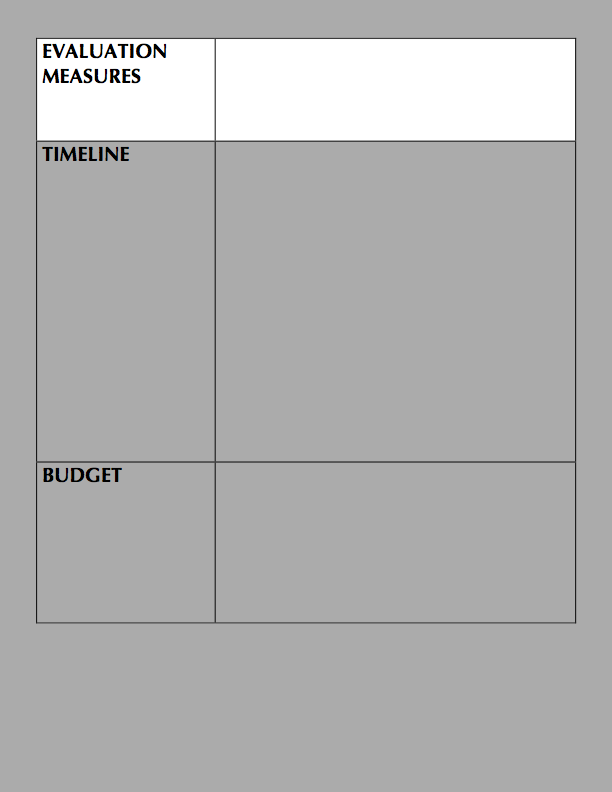 Why Evaluate? Have you ever heard yourself say:
Why Evaluate? Have you ever heard yourself say:
- “Next time, I’ll try this and see how it works.” or
- “I’ll never do that again.” or
- “I liked this <activity> better than that.”
We use evaluation in our everyday work life to test an idea or to make comparison.
Why Evaluate your Intervention Activity?
- To sustain your activity by informing necessary improvements, attracting new funders, and sparking community interest in child passenger safety.
- To ensure that your intervention activity is reaching your intended audience and goals
- Basically, you will note what worked, what didn’t and WHY!
While your overall goal – improving child safety seat use- and SMART objectives may be clear in your mind, you will now need to try to measure your success at completing those objectives.
Types of Evaluation
- Impact – evaluates long-term changes that occurred as a result of your intervention (most complicated) – This may be a long term measure of measure of motor vehicle relate injuries or deaths.
- Outcome – evaluates the effects of your activity (e.g. changes in number of car seats used correctly among booster-aged children)
In Module 4, you learned how you could collect outcome data through using vehicle observations surveys.
- Process – evaluates “how” you implemented your intervention (simplest) – We will be focusing on this type of evaluation for this intervention activity!
Process Evaluation
While this may be the simplest type of evaluation process, evaluation measures will provide very valuable information and will allow you to do one of more of the following:
- Determine if your objective is met and if not, why?
- Document and analyze what you did and when
- Assess whether activities were implemented as planned
- Assess if expected items or outcomes were actually produced
Evaluation Steps
- Revisit the Intervention Activity – Your SMART objective(s) should provide some specific measures, targets and time frames you will want to include in your evaluation measure. Example: let’s look at a SMART objective for Law Enforcement Training. Provide 3 law enforcement trainings that instruct law enforcement officers and improve their recognition of the new tribal child passenger safety law by July 2017.
2. Determine Evaluation Questions, measure, data source, person responsible and timeline.
3. Determine/Describe Output Measures.
4. Collect Process Data/Information. Make sure you identify any unexpected events that may have affected your measure.
- For example: Instead of 3 trainings, you only conducted 1 because officers preferred one training where all could attend at the same time.
- You still reached the same number of officers, but in fewer training sessions.
- Note any changes to your original plan as well as explanations for those changes.
Your SMART objectives will help you determine each piece of your evaluation. Remember that keeping it simple works!
Following is a sample Evaluation plan:
| Evaluation Question | Measures | Data Sources | Person Responsible | Timeline |
| What was the training’s reach? | # of trainings; # of attendees; # of officers receiving Certificate of Completion | Logs; Attendance Sheets | Tam | June-July |
| Did the training improve recognition of CSS law? | # of officers who identified CSS law pre & post training | Survey Question (yes/no) | Jack | June-July (during training) |
Useful References:
